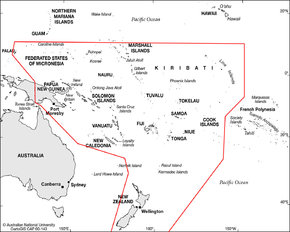Todjaeger
Potstirrer
ANDAgree except a LHD instead of an LPD. More flight deck space.
Honestly I think the NZDF would be better served ordering one of the existing LPD designs with suitable modifications, as opposed to ordering an LHD, either one of the existing designs or having a new one custom-designed for NZ.Any future strategic sealift role would be best retained as part of new build LHD that can provide the greater flexibility that aviation support provides particularly in the SouPac were we will often be deployed without port facilities, runways and other infrastructure.
While the notion of more flight deck and/or hangar space might seem appealing, how much 'more' is really useful? Using the HMNZS Canterbury (an LHA) as an example, there is hangar space for four helicopters, and landing spots for two medium helicopters or one Chinook IIRC. Given that across the whole of the NZDF there are only eight transport helicopters in total, trying to pack more onto a single ship does not sound like a good idea to me.
Another area of concern is what would be a reasonable troop and vehicle capacity? Having gone through the various LHD classes currently in service, the smallest (which is really more of a modified LPH) is ~19,000 tons at full load and can lift ~720 troops and ~200 vehicles, while other designs can very the numbers of troops and vehicles they are still significantly greater than NZ would be able to field.
Given the size of the NZ Army, I would consider a troop lift requirement of a reinforced company reasonable, with perhaps some spare capacity in the event of an emergency to lift/move some extra personnel. The whole uniformed portion of the NZ Army (regular and reserves) is only ~6,400 personnel, so it would seem unwise and/or wasteful of resources to purchase a vessel to move 10%+ of the Army in one go, or get such a vessel with the expectation that the NZDF would leave it half (or more) empty virtually all the time.
There are really only two capabilities which I think would be wise to include that NZ would not make use of but would instead be incorporated to provide options to NZ friends/allies. The first is that I would require at least one vehicle deck that is rated and capable of functioning as a heavy vehicle deck, able to handle the weight of MBT's and other large armoured vehicles. NZ has no such vehicles in the inventory at present, and the situation seems likely to remain this way for some time, but being able to land or remove MBT's could enable Kiwi forces to operate with small Australian or US force detachments without also requiring amphibious assets from them. By way of example, if NZ was the lead nation on an international peace keeping/enforcement operation in the S. Pacific or Pac Rim where a small number of heavy direct fire support vehicles were needed or advisable, then it would be less resource intensive if the Kiwi vessel was able to land the personnel, as opposed to requiring each contributing coalition partner to bring their own vessels in to land what might amount of a platoon or less of personnel.
The second would be that the aviation facilities (landing pad and hangar) should be able to handle larger transport aircraft like Chinooks and Ospreys. Again, this would be to enable better inter-operations between NZ and friends/allies.
Me being me, I would also like to see any Kiwi amphibious vessel kitted out with both more, and more overall capable weaponry when compared with how most other amphibious vessels are armed. All-around coverage of the approaches to the vessel by CIWS (preferably something larger and with greater range than the Mk 15 Phalanx 20 mm) as well as an aerial self-defence capability. Given that the RNZN is adopting Sea Ceptor, it would make sense that a 20+ Sea Ceptor VLS be fitted. A naval gun like is fitted aboard Singapore's Endurance-class LPD's might also be a good choice giving both an ASuW and NGS capability and perhaps even more air defence capabilities given some of the specialty munitions now available for 76 mm and 127 mm naval guns.



